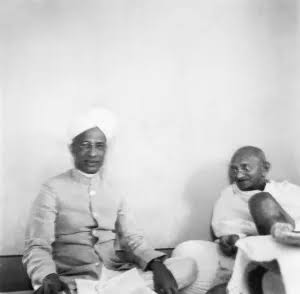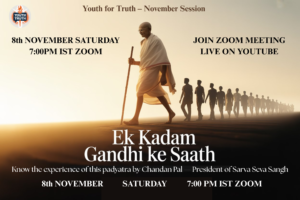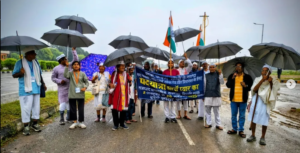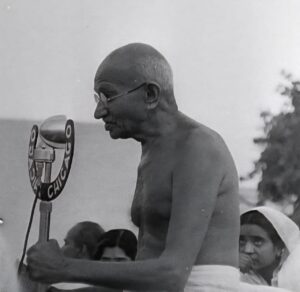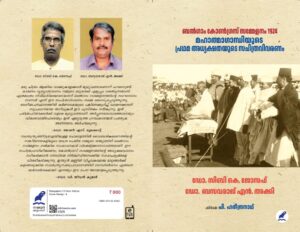In India, Teacher’s Day is celebrated on September 5, coinciding with the birth anniversary of Dr. Sarvepalli Radhakrishnan, a renowned philosopher, teacher, and the second President of India. Dr. Radhakrishnan had great admiration and respect for Mahatma Gandhi. When Radhakrishnan met Gandhi in December 1947, he told Gandhi that he intended to dedicate his commentary on the Bhagavad Gita to him. Gandhi’s reply was, “Who am I? What is my service? You are my Krishna. I am your Arjuna.” Through this, Gandhi wanted to convey that he was the seeker, and Radhakrishnan was his teacher. On the occasion of Teacher’s Day, we honour the legacy of Dr. Radhakrishnan and his profound impact on education and philosophy.
On the occasion of Teacher’s Day, I would like to reflect on Mahatma Gandhi, a great teacher of humanity who was ever ready to remain a student throughout his life, and his quest for learning never ceased. While addressing students at his Sevagram Ashram, he said:
“A teacher who establishes rapport with the taught becomes one with them, learns more from them than he teaches them. He who learns nothing from his disciples is, in my opinion, worthless. Whenever I talk with someone, I learn from him. I take from him more than I give him. In this way, a true teacher regards himself as a student of his students. If you will teach your pupils with this attitude, you will benefit much from them.”
(Talk to Khadi Vidyalaya Students, Sevagram, Harijan Sevak, 15 February 1942, CWMG 75, p. 269)
From these words, one can understand Gandhi’s approach to learning and teaching.
Gandhi’s Experiments in Education
Though Gandhi, by profession, was a lawyer, he experimented in the field of education from his South African days. His Phoenix Settlement, established near Durban in 1904, was his first laboratory in education in a school environment. His experiments were further strengthened in another community he established near Johannesburg in 1910. He considered character as the true foundation of education and was aware of the significant role the teacher has to play in this regard.
He wrote in his Autobiography:
“The training of the spirit was possible only through the exercise of the spirit. And the exercise of the spirit entirely depended on the life and character of the teacher. The teacher had always to be mindful of his p’s and q’s, whether he was in the midst of his boys or not.”
He was convinced that a teacher could influence the students even if he is not in their midst; that is why he further wrote:
“It is possible for a teacher situated miles away to affect the spirit of the pupils by his way of living. It would be idle for me, if I were a liar, to teach boys to tell the truth. A cowardly teacher would never succeed in making his boys valiant, and a stranger to self-restraint could never teach his pupils the value of self-restraint. I saw, therefore, that I must be an eternal object-lesson to the boys and girls living with me. They thus became my teachers, and I learned I must be good and live straight, if only for their sakes.”
The Tolstoy Farm Experiment
On the Tolstoy Farm, Gandhi made it a rule that the youngsters should not be asked to do what the teachers did not do; therefore, when they were asked to perform any kind of work, there was always a teacher cooperating and actually working with them. Hence, in his educational experiments, learning and teaching were joint ventures filled with joy and cheerfulness.
He emphasized the role of teachers in character building:
“Character cannot be built with mortar and stone. It cannot be built by hands other than your own. The Principal and the Professor cannot give you character from the pages of books. Character building comes from their very lives and, really speaking, it must come from within yourselves.”
Holistic Definition of Education
For Gandhi, education was about drawing out the best in pupils – somatic, mental, and spiritual. He defined education as “an all-round drawing out of the best in child and man – body, mind, and spirit.”
This definition reflects his holistic approach to education, which aimed to develop the physical, mental, and spiritual aspects of an individual in a balanced and integrated way.
Rooted in Swadeshi, Open to the World
Gandhi’s approach to education was rooted in the spirit of swadeshi. It was broad-minded and not parochial in its very nature. He said:
“I do not want my house to be walled in on all sides and my windows to be stuffed. I want the cultures of all lands to be blown about my house as freely as possible. But I refuse to be blown off my feet by any. I would have our young men and women with literary tastes learn as much English and other world languages as they like, and then expect them to give the benefits of their learning to India and to the world, like a Bose, a Roy, or the Poet himself. But I would not have a single Indian forget, neglect, or be ashamed of his mother tongue, or feel that he or she cannot think or express the best thoughts in his or her own vernacular. Mine is not a religion of the prison-house.”
(Young India, 1-6-21)
In short, revisiting Mahatma Gandhi’s views on teaching and learning offers valuable insights and lessons for educators and learners alike. His emphasis on character building, all-round development, and the importance of the teacher’s role in shaping young minds is particularly relevant today in a world where education has become a commercial activity.
By adopting Gandhi’s approach, educators can create a more inclusive, joyful, and meaningful learning environment that fosters the overall growth of pupils. As we celebrate Teacher’s Day, let us reflect on Gandhi’s ideals and strive to incorporate them into our educational practices, thereby empowering future generations for the creation of a better society.
Dr.Siby K Joseph is Director Sri Jamnalal Bajaj Memorial Library and Research Centre for Gandhian Studies, Sevagram Ashram Pratishthan, Wardha Maharashtra.
Email: directorjbmlrc@gmail.com


